Not long ago, PA SHPO announced a new program, the Historic Property Inspection Program to improve communication with between the property owners of some of Pennsylvania’s most significant historic treasures under preservation covenant with our office.
Recently, PA SHPO staff were fortunate to have a behind the scenes tour of the John Harris-Simon Cameron Mansion in Harrisburg, Dauphin County as part of one of the inaugural site visits. The property is under a covenant due to several past Keystone Historic Preservation Grant projects including a current capital project.
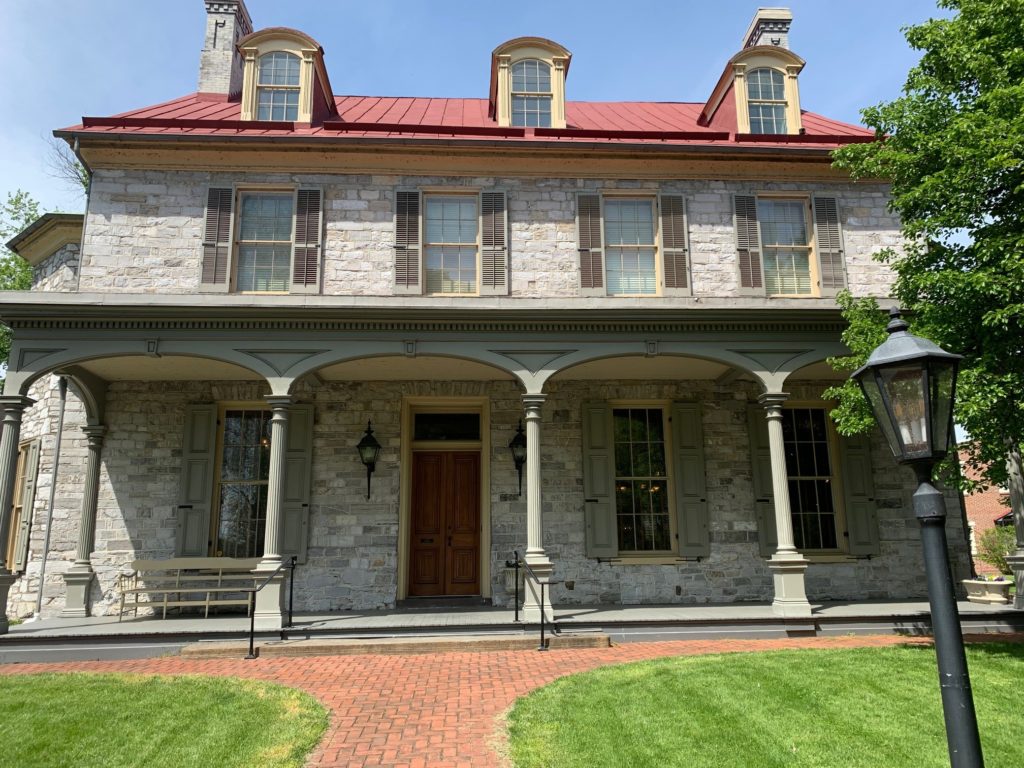
John Harris-Simon Cameron Mansion
For those who may be unfamiliar, the John Harris-Simon Cameron Mansion (PA-SHARE Resource Number 1973RE00107) was built in 1766 by John Harris, Jr., son of the first settler in the area, and founder of the City of Harrisburg, in 1785.
The home was originally a Georgian-style farmhouse. After several changes in ownership, the house was purchased by Reverend Beverly Waugh and became the home of the Pennsylvania Female College in 1853. Unfortunately, the college closed in 1861 after Reverend Waugh’s death.
The building was greatly altered by its next owner, Simon Cameron (March 8, 1799-June 26, 1889). Cameron – a college trustee, U.S. Senator, Secretary of War in 1861, Ambassador to Russia in 1862, and significant state and national political official – purchased the Mansion in 1863.
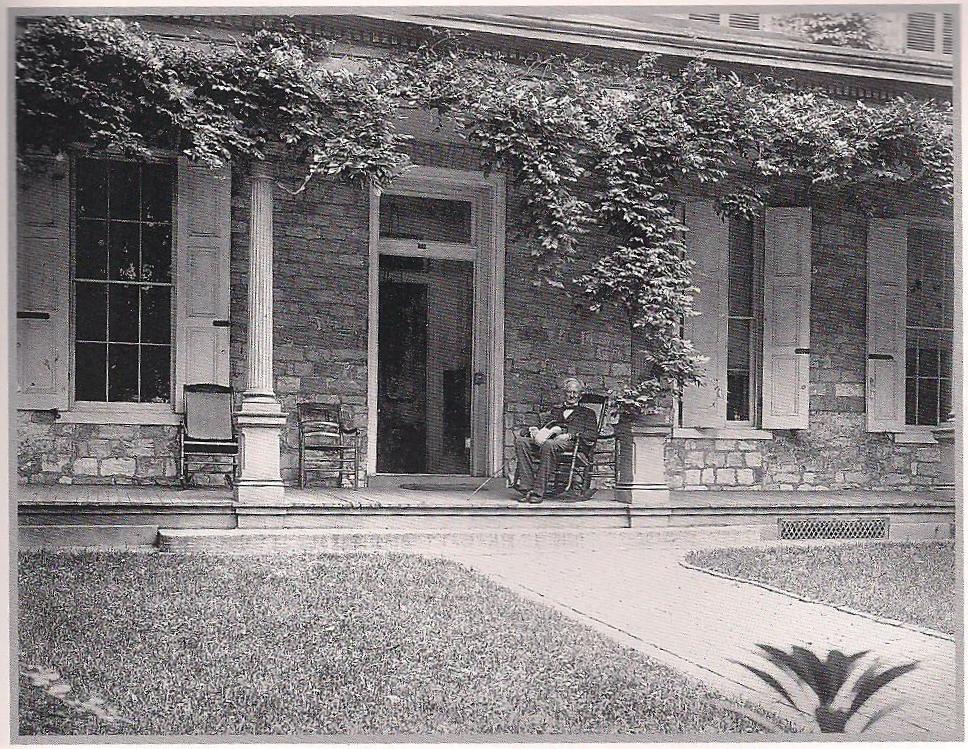
During and following his time in Europe, Cameron had significant alterations made to the home to reflect the Italianate Victorian style and highlight purchases made during his travels. The kitchen and rear additions were demolished, and a new two-story wing was built. A solarium, butler’s walkway, and alcove were added to the southeast elevation.
Most notably, the first floor of the main house was lowered and the first-floor windows and doors were lengthened by two feet. The wall between the two south parlors was removed to make a grand parlor with pier mirrors purchased in France. An ornate ceiling, and stained-glass windows purchased in Germany were added to the new alcove between the two Italian marble fireplaces.
Cameron’s grandson, Richard Haldeman, added the northwest alcove with a chrome-tiled bathroom in 1929. Cameron’s descendants occupied the Mansion until 1935. They gave the Mansion to the Historical Society of Dauphin County in 1941. In 1976 the Mansion was designated a National Historic Landmark, one of three located in Harrisburg.
Current Keystone Project
The Historical Society’s current Keystone project restores three landscape elements on the property that have strong association to the John Harris-Simon Cameron Mansion namesakes. The John Harris grave site, located just to the south of the Mansion in Riverfront Park, is maintained by the Historical Society.
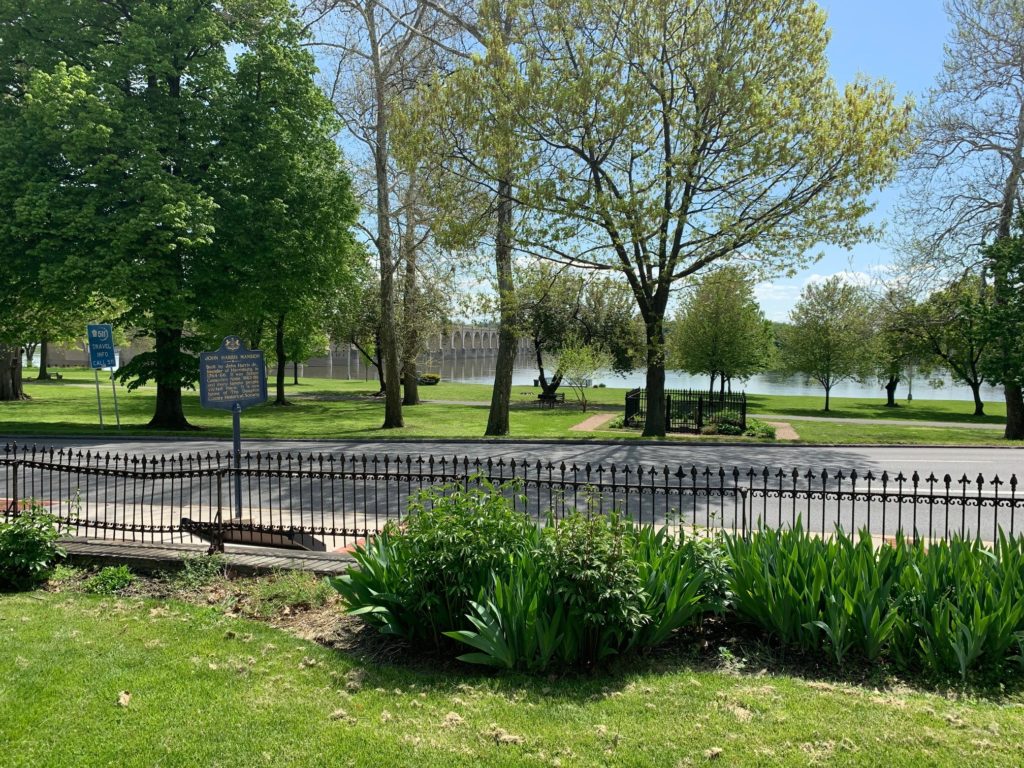
The site marks where in 1719, John Harris, the first settler of Harrisburg, built his log cabin home, trading post, and ferry operation. The other component is the gazebo installed by Simon Cameron located in property’s side yard. The highly ornate wrought iron gazebo shelters the Dauphin County courthouse bell that was in service between 1860-1929.
Ironwork Restoration
The two projects were scoped together since they are similar in nature. Although John Harris was buried in 1748, the surrounding iron fence was installed around the grave site in the 1870s. This fencing was relocated from the State Arsenal which was on the grounds of the Capitol.
When the State Arsenal was moved to a new location, the fence was taken down and sections of it were donated to be put around John Harris’s grave, most likely at the request of Simon Cameron. The iron fencing required repair due to exposed rust and several missing points.
Simon Cameron himself had the gazebo installed in the side yard of the Mansion in the late 1800’s. The ironwork was handcrafted locally in Harrisburg. Hess Ornamental Iron, Inc. developed the scope of work for the ironwork restoration component of the project.
Their staff scraped loose paint off the ironwork, repaired missing or loose connections and then repainted. Just as we found out during our visit, the gazebo is the centerpiece of the Mansion gardens and a popular photo stop for tourists.
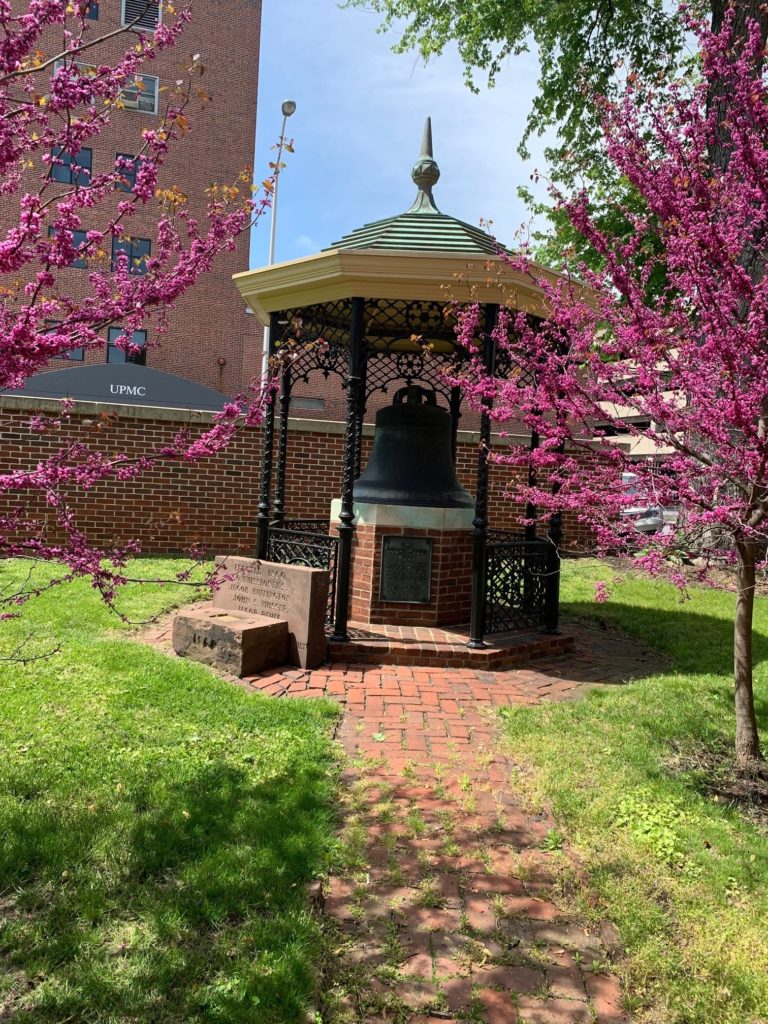
I would be remiss if I didn’t mention the bell seen in the above photograph. The bell, on the grounds since 1941, also has a storied past and association with Simon Cameron. The bell was cast in 1860 in Troy, New York and was mounted at the 1860 Dauphin County Courthouse until 1929. Cameron led a program after the firing of Fort Sumter in April 1861 on the courthouse steps where the bell was rung. The bell was rung 90 times on the last day of Simon Cameron’s funeral services as well.
As part of the larger ironwork restoration, the bell was also cleaned and conserved and the brick walkway will be restored.
Historic Property Site Visit
The proximity of the Harris-Cameron Mansion as well as its National Landmark status and architectural complexity, made it a perfect candidate to field test our Historic Property program. Executive Director, Christine Turner and Office Manager, Steve Wydra from the Historical Society of Dauphin County graciously spent the afternoon with Frank Grumbine, PA-SHPO’s Central Region Community Preservation Coordinator and me discussing many of the recent projects at the property.
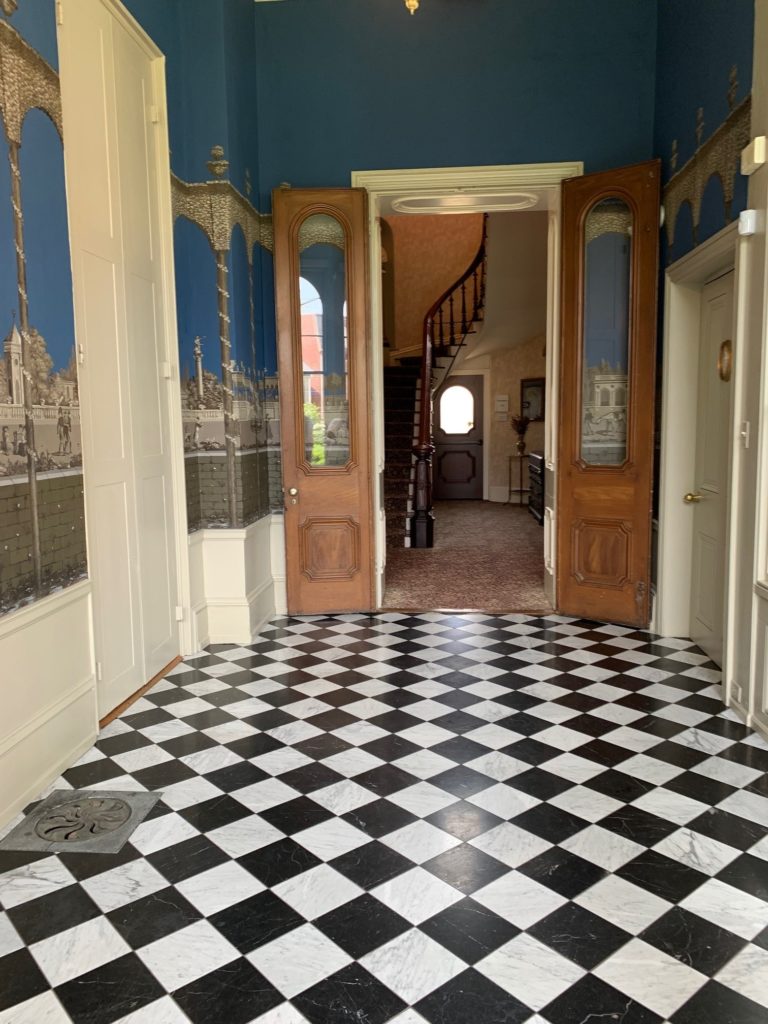
Like any historic building, the Harris-Cameron Mansion is a never-ending list of maintenance needs that the organization prioritizes to ensure that the mansion will be enjoyed for years to come. Overall, we found the property in very good repair with only isolated issues the majority of which the staff pointed to us as concerns or on their radar for later work.
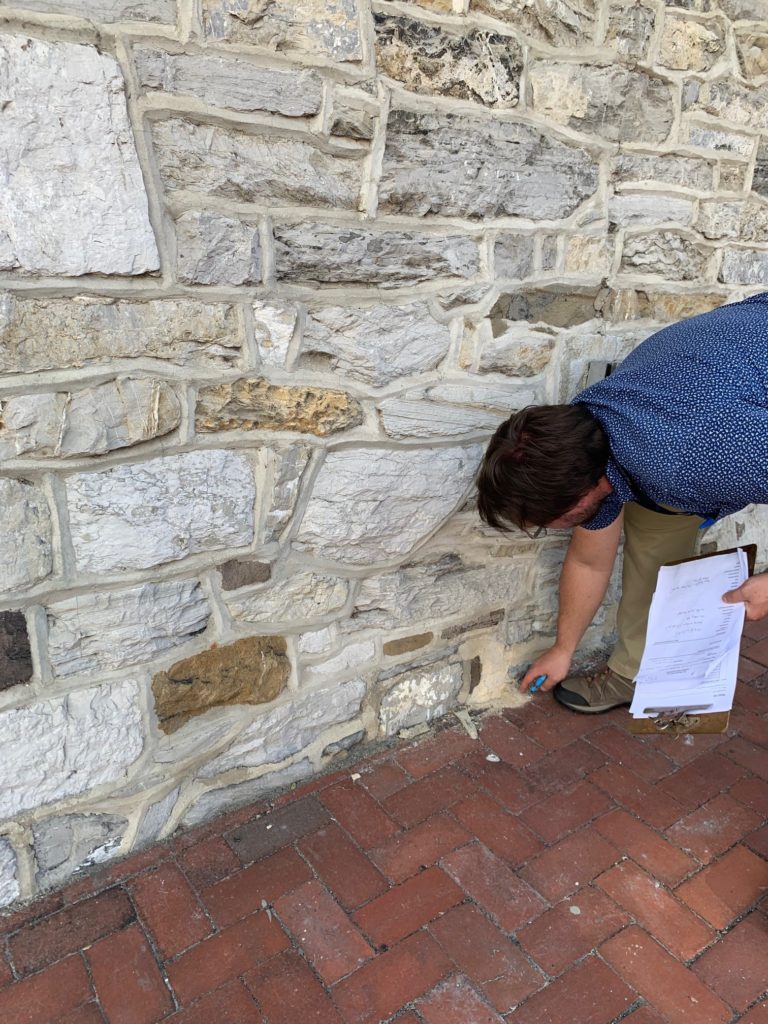
In addition to the pleasant opportunity to visit the Harris-Cameron Mansion in person, this inaugural site visit helped us tool our data collection methods for other upcoming visits within our covenant portfolio. For more information about the PA-SHPO’s new program, feel free check out my previous post on the Historic Property Inspection Program from February 16, 2022.
Visiting the Dauphin County Historical Society
The Harris-Cameron Mansion is open to visitors for Mansion tours, exhibits, seminars, and historic site bus trips. Two rooms of the Mansion are used as regularly rotating exhibit spaces, while remaining non-storage rooms have semi-permanent exhibits.
I certainly enjoyed the current Made in Dauphin County exhibit. The Historical Society also maintains a library, archives, and artifact collections on site for genealogy and scholarly research, exhibits, and educational programs.
Learn more at http://dauphincountyhistory.org/museum/.
Comment Policy
PHMC welcomes and encourages topic-related comments on this blog. PHMC reserves the right to remove comments that in PHMC’s discretion do not follow participation guidelines.
Commenters and Comments shall be related to the blog post topic and respectful of others who use this site.
Commenters and Comments shall not: use language that is offensive, inflammatory or provocative (this includes, but is not limited to, using profanity, obscene, or vulgar comments); disparage other commenters or people; condone illegal activity; identify the location of known or suspected archeological sites; post personal information in comments such as addresses, phone numbers, e-mail addresses or other contact details, which may relate to you or other individuals; impersonate or falsely claim to represent a person or an organization; make any commercial endorsement or promotion of any product, service or publication.
If you would like to comment on other topics not related to this blog post but related to PHMC, please fill out the PHMC Contact Us Form.
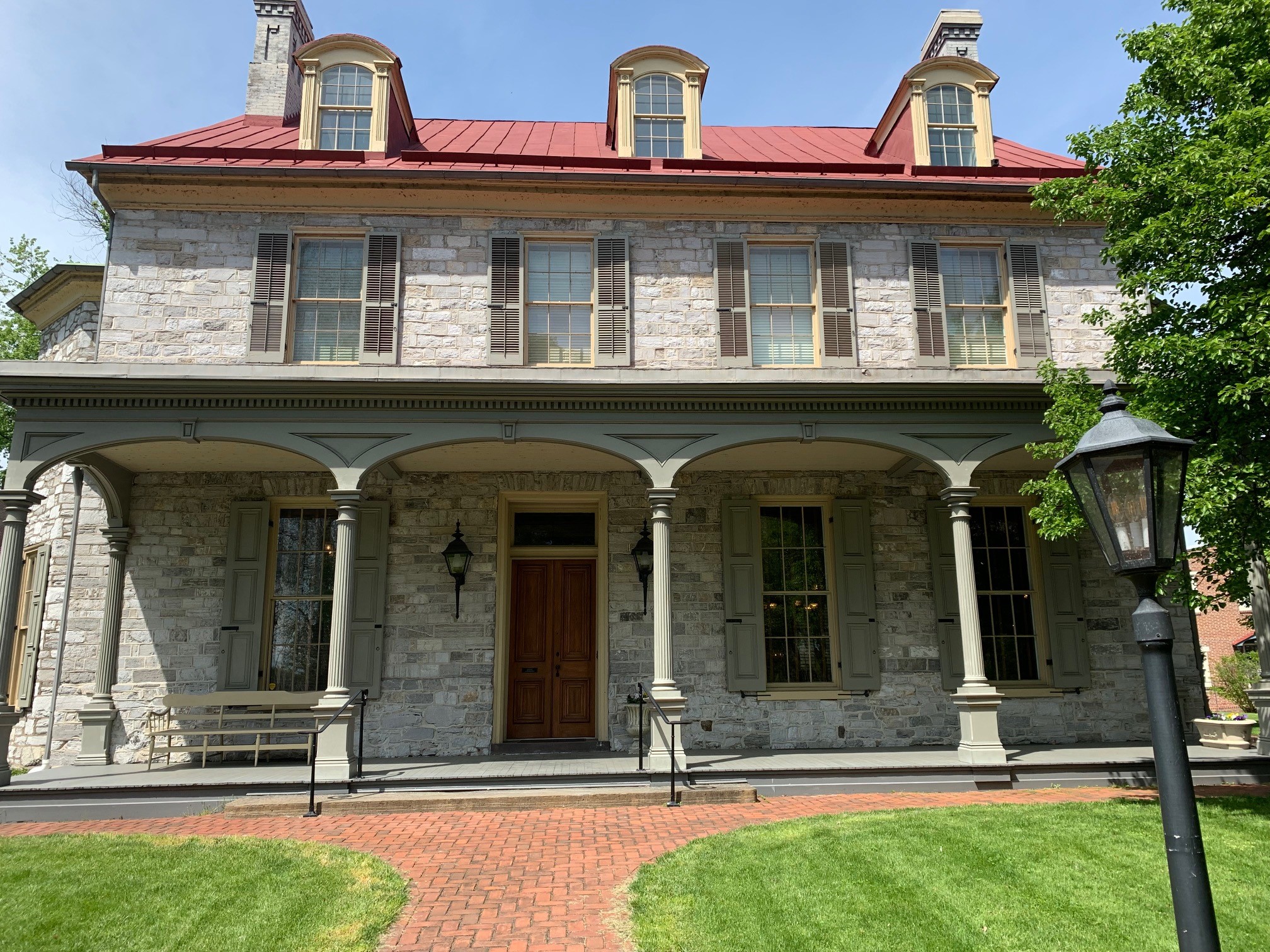
Not to be too picky, but for the record, it’s “Historical Society of Dauphin County.”
J. Robinson
Former President of HSDC